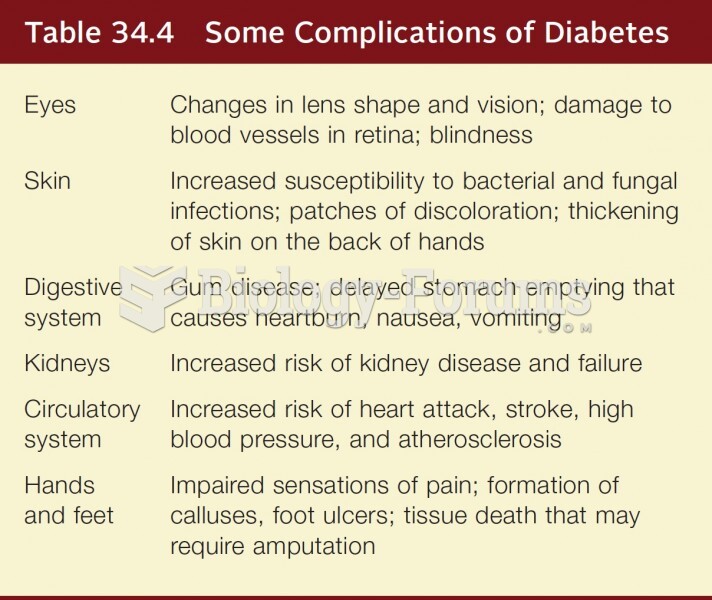Answer to Question 1
Correct Answer: 3
Rationale 1: Not this many adults take oral agents only.
Rationale 2: More than 3040 of adults take oral agents only.
Rationale 3: 58 of adults with diabetes take oral agents only.
Rationale 4: More than 4050 of adults take oral agents only.
Global Rationale: 58 of adults with diabetes take oral agents only.
Answer to Question 2
Correct Answer: 2,3,4,5
Rationale 1: The client with diabetes should have annual eye examinations, not every 2 to 3 years. Getting annual eye exams is an important teaching point to facilitate early diagnosis of any microvascular changes in the eyes.
Rationale 2: Monitoring blood pressure carefully is an important teaching point to aid recognition of hypertensive changes associated with diabetes.
Rationale 3: Checking the feet for signs of skin breakdown is an important teaching point because, due to peripheral neuropathy, the client might not sense small changes in skin integrity in the feet.
Rationale 4: Maintaining glucose control is an important teaching point because tight glucose control helps prevent the complications of diabetes.
Rationale 5: Quitting smoking in an important teaching point because nicotine is a vasoconstrictor, and clients with diabetes are at greater risk for microvascular changes.
Global Rationale: Monitoring blood pressure carefully is an important teaching point to aid recognition of hypertensive changes associated with diabetes. Checking the feet for signs of skin breakdown is an important teaching point because, due to peripheral neuropathy, the client might not sense small changes in skin integrity in the feet. Maintaining glucose control is an important teaching point because tight glucose control helps prevent the complications of diabetes. Quitting smoking in an important teaching point because nicotine is a vasoconstrictor, and clients with diabetes are at greater risk for microvascular changes. The client with diabetes should have annual eye examinations, not every 2 to 3 years. Getting annual eye exams is an important teaching point to facilitate early diagnosis of any microvascular changes in the eyes.







